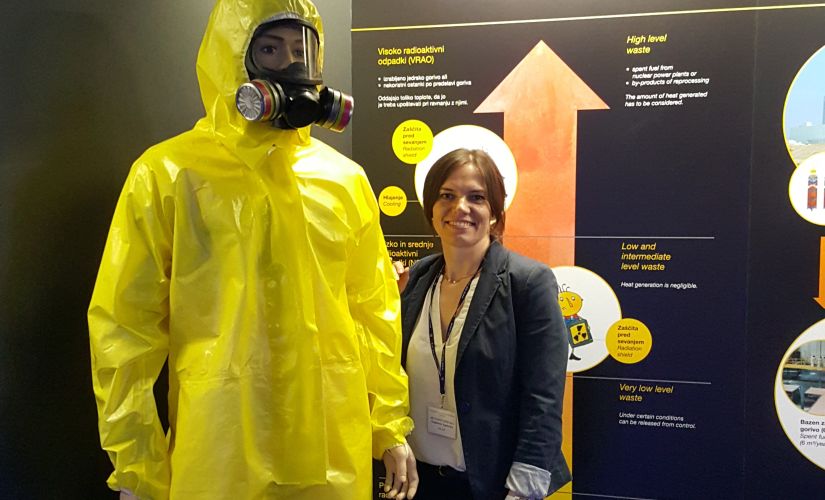Radioactive isotopes are naturally present in the environment, albeit history has seen dramatic cases of increased radioactivity as a result of human activity. Therefore, taking into account potential risks and the fact that air pollution and climate change are correlated, the need to monitor and analyze the air that we breathe is plain to see.
Prof. Długosz-Lisiecka, availing herself of the funding obtained in the 2nd edition of the ECIU Researcher Mobility Fund at Lodz University of Technology, will visit the University of Aveiro, Portugal. While there, she will conduct simulations which she will then compare their results against the monitoring data in her database. Collected in Łódź, the data contains information about air radiation dose rates under specific meteorological conditions.
Prof. Magdalena Długosz-Lisiecka emphasized:
‘I am looking forward to having the opportunity to draw on the experience of the CESAM team (Center for Environmental and Marine Studies) in large-scale high-variability of weather conditions modeling of the distribution of contaminants, dust, and gases in the atmosphere. The management of a BIG DATA-type of database makes another point on the agenda of an approximately two-week visit. It should help in further chemometric studies where, with the aid of mathematical and statistical methods, the factors of variability will be determined, for example, the reasons for spikes in the investigated dose rate values in the ground-based measurements.’
As the researcher also pointed out, gaining new insights into emission modeling, including selection of appropriate models and other tools, will be an equally important part of her visit.
The Portuguese Center is known for excellent international research on the biosphere, atmosphere, hydrosphere, lithosphere, and anthroposphere.
‘Cutting-edge research in environmental and marine sciences, on climate change adaptation and mitigation, atmospheric processes and modeling, environmental processes and pollution distribution are CESAM’ strengths’, prof. Magdalena Długosz-Lisiecka explained. ‘I have been studying radioecological aspects of these issues for a number of years now, but to develop predictive models and tools requires a high degree of specialization and interdisciplinary knowledge. It is a very dynamic process.’
CESAM has more than 500 researchers, doctoral candidates, experts in many fields doing both basic and applied research in natural and social sciences. It is what gives the Center, part of the University of Aveiro, its advantage. Since 2014, CESAM has been rated as excellent by the Foundation for Science and Technology (FST).
Prof. Magdalena Długosz-Lisiecka, asked about her visit to the University of Aveiro, said:
‘I have recently built a database for four localities. The database contains about 85,000 records and 30 variables. During my visit, I intend to analyze this database in collaboration with dr David Carvalho of the CESAM team, using new modeling systems. The analysis will include factors of variability,, modeling changes in concentrations, value prediction, and modeling the distribution of radioactive isotopes in the atmosphere.’
One of the aims of the ECIU Researcher Mobility Fund is to reinforce international cooperation. Prof. Magdalena Długosz-Lisiecka counts on this, too. ‘I wish to see collaborative research projects develop into long-term scientific cooperation, if only for the purpose of collaborative research publications and large-budget research grants.’

